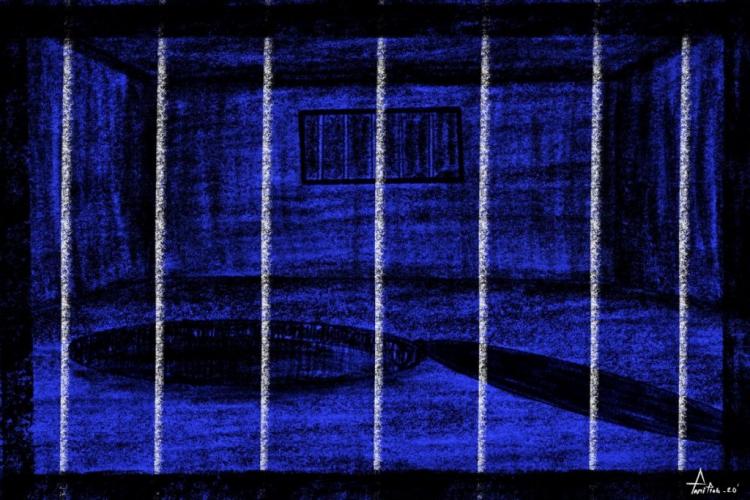How grantee Sukanya Shantha's petition on caste discrimination in India's prisons made its way to a supreme court bench
In India, caste-based discrimination is widespread. And in some cases, it’s still codified. That is what Pulitzer Center grantee Sukanya Shantha found when she investigated caste discrimination in Indian prisons. She discovered that caste dictated the tasks individuals were assigned and what sections of the prison they lived in—all sanctioned in official prison manuals.
Just over three years after The Wire published the original report in December 2020, Shantha’s findings have made their way to an India supreme court decision bench, which heard the case on January 3.
Aside from an early reaction in 2021 by a Rajasthan high court that ordered amendments to the state’s manual, most states in India did nothing. So Shantha gathered a legal team to file the nationwide public interest petition herself.
A notice from the supreme court based on Shantha’s petition has been issued to 11 states in India, requiring a response within four weeks, which is roughly the end of January. Her team is anticipating the next steps.
“We are preparing a response if all of the states come back with denial,” Shantha said.
While on early assignments covering the courts, Shantha realized she wanted to better understand the legal system, so she paused her career to focus on law. While completing her master’s degree at the Tata Institute of Social Sciences in Mumbai and the accompanying research, Shantha said she had significant access to prisons, giving her a better understanding of prison conditions that drove much of her future reporting.
“I have training in law, but I have always understood law from outside the legal system; as a reporter, I was more of a spectator,” Shantha said. “I never practiced. So when this petition happened, I had pretty much forgotten how to draft legal petitions. But I know how to research, how to doggedly follow something and patiently pursue something. As a journalist, I do that.”
To help her compile the petition, Shantha called upon Disha Wadekar, a skilled lawyer and anti-caste scholar, who Shantha said has a nuanced understanding of the presence of caste in every aspect of Indian society. When they started working on the petition, Shantha said, she didn’t think it would make it very far.
“But things fell into place, and we had a petition,” Shantha said.
Later, S. Muralidhar, senior advocate and former chief justice of the Orissa High Court, joined the case pro bono to represent Shantha.
Shantha isn’t the first journalist to turn her reporting into a legal case in India. In 1981, journalist Olga Tellis filed a legal case in conjunction with human rights groups after she covered instances of authorities demolishing slums and evicting “pavement dwellers” in Mumbai. She won the resulting high court case, which mandated that the government was responsible for providing alternative accommodation.
“It became a landmark judgment,” Shantha said. “So we’ve had journalists approaching the courts in the past, but not many. That’s also because most organizations don’t promote this. Your idea of taking your story to a meaningful conclusion is so dependent upon how the owners of the newspaper think.”
The Wire was supportive of Shantha's petition, which she was doing independently from her daily reporting work. The Wire aims to do impactful stories and “make a lot of noise,” Shantha said, so this path made sense for her investigation.
“As journalists, what do we want? When we raise an issue of human rights violations, we want the violations to end,” Shantha said. “There are so many reporters who are doing such brilliant jobs and amazing work, but they don’t have their organization’s support.”
Pulitzer Center Senior Editor Boyoung Lim saw the potential impact in the project’s early stages.
“Sukanya’s project stood out because she had identified a widespread, deep-rooted issue hiding in plain sight and affecting so many people,” Lim said. “We are proud to have supported this project, which has continued to make a profound impact, not only at the policy level but also at an individual level, directly helping those suffering from discrimination and human rights violations.”
Several other Pulitzer Center grantees have pursued reporting that is helping redefine how journalists cover caste in India.
Suprakash Majumdar documented how generations of Dalits, a community at the bottom of the caste pyramid, are struggling with government policies excluding them from waste management, despite not being offered an alternative. Majumdar’s story highlights extreme wealth inequality in India and why social mobility is so difficult for India’s “scheduled castes” that have been relegated to jobs like trash collecting. The government policies Majumdar investigates were guised as a solution to India’s trash problem.
Flavia Lopes and Pragathi Ravi likewise explain how environmentally friendly government policies can leave behind members of scheduled castes. They profile a solar park in a village in Karnataka that was sold as a beacon of opportunity for the community, who gave up their agricultural land for the solar panels.
“While economic opportunities are supposed to aid their quest in battling discrimination and attaining social mobility, the park has done little to blur caste lines through employment,” Lopes and Ravi write.
Other Center-supported stories report instances of political repression of lower castes and Muslims in India, explain how caste functions in diaspora communities in the United States, and profile former Hindu nationalists who became disillusioned with caste. By interrogating underreported drivers and effects of caste discrimination, journalists are revealing deep tensions within Indian society and prompting calls for change.
For her reporting, Shantha said there are implications both within and beyond prisons. Shantha is optimistic the prison manuals will be changed to eliminate formal caste discrimination, but she said the larger challenge will be to eliminate informal discrimination, which she fears will persist regardless of the manuals. Discrimination in prisons is reflective of larger societal trends. Still, she said, she hopes her reporting will spark a conversation and improve conditions for marginalized castes.
“When we put out stories and the stories are making noise, we expect the courts to take note of it,” Shantha said. “But if that does not happen, then we bring it to the notice of the courts. It’s been 78 years since India got its independence, and still, these rules exist. It’s unconstitutional, but they still exist. As journalists, it’s within our capacity to bring it to the note of the change-makers.”






